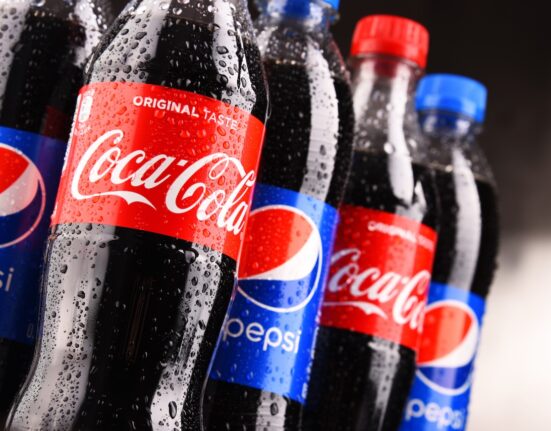Consolidation. For some it’s a source of contention, for others, it’s possibly a bright future. The term is widely used in the business world to describe the process of companies joining together to form a larger, more dominant entity. Practically, consolidation in the produce space is growing every year. Think Kroger merging with Harris Teeter, Albertsons buying Safeway, and Amazon buying Whole Foods just to name a few.
In recent years, there has been a growing trend of consolidation in the produce and retail space, with some of these large companies acquiring smaller, independent and locally-owned businesses in the market. This trend has had a significant impact on the industry as a whole and has raised questions about its impact on consumers, suppliers and the economy.
There are several factors that have contributed to the trend of consolidation. First, the increasing demand for fresh and convenient food options has created an environment where larger companies are able to offer a wider range of products and services to consumers.
This is where the larger organizations are able to satisfy the customer’s desire for quick and affordable grocery options. In a time where customers want an easy shopping experience, the monetary support of major backing is a crucial distinction in providing a sought-after experience.
Secondly, advances in technology and the growing use of e-commerce platforms have made it easier for large companies to reach a wider audience and sell more products. Coming in all forms – such as autonomous vehicle drivers and self-picking robots – the bursting speed at which technology can support this evolution is incredible. One way that technology advances are quite literally advancing the grocery store experience is through fulfillment centers.
In May 2018, Kroger announced a partnership with Ocado Group to construct up to around 20 customer fulfillment centers in those first three years. Since then, Kroger has built a 336,000-square-foot facility in Groveland, FL, where it will employ 400 people and is expected to bring in $400-500 million in annual sales. The buck doesn’t stop there, though. By the end of 2023, Kroger anticipates digital revenue to double to $20,000,000,000.
Finally, we can’t ignore the fact that the growth of the global population is moving at a breakneck pace. As of this writing, the average growth of the human population is 83,000,000 people annually. With this great growth comes great responsibility and thus increasing demand for food products. This overwhelming demand has created a real need for larger companies to have greater economies of scale and access to more resources.
Superficially, this may look like the larger companies taking market share for purely profitable purposes, but in reality, they are the few that can make the most impact and affect the largest groups of people; the people who need it the most.
Within the consolidation model, there are several benefits for both the companies and consumers. On one hand, the companies can benefit from consolidation, and this can lead to major cost savings. This shows itself through economies of scale and the ability to pool resources and expertise. The issues that were once shouldered by one or two companies, can now be shared and have more eyes and brain power to come up with even more solutions.
This obviously can lead to increased profitability, improved product offerings and greater market share. In a society that benefits the bold, a business with a vision to grow can make great strides in securing a profit and serving the global community.
Consolidation can also result in the creation of more efficient supply chains, which can reduce waste and increase the speed and reliability of product delivery. The benefits don’t stop with the companies; the consumers can also benefit. Larger companies are often able to offer a wider range of products at lower prices. This is due to their greater mode of scale, their reach for an affordable market and the marketing budget to make things cost-effective for the customer.
Additionally, consolidation can lead to improved product quality and safety, as companies can invest in research and development to create new and better products.
Like all things, however, consolidation also has its drawbacks. One of the main concerns that people may have with consolidation is the impact on small and independent producers and retailers. The boutique or artisanal stores we mentioned earlier will get acquired by the larger companies, and the larger company often takes over their suppliers and customers, which in turn reduces the number of independent players in the market.
What was once a market full of diversification and independence, now turns into a carbon copy of every corner in a strip mall. This can quickly result in reduced competition. Why would anyone want to start a produce business when the competitors have budgets that are more than they could compete with? Because the competition falls off, and there is a potential for higher prices and reduced choices for consumers.
Another concern is the impact on local communities. To keep a handle on maintaining costs, larger companies often have centralized operations. Unfortunately, this can result in the closure of local stores and the loss of local jobs.
A community that may have been relying on a particular employment opportunity may no longer have that option if their businesses are consolidated. This directly has a significant impact on local economies and communities, as small businesses and independent retailers are often the backbones of local economies.
There are also concerns about the impact of consolidation on food safety and the environment. Because of cost optimization and profitability, the larger companies may prioritize efficiency and cost savings over product quality and safety. There is an increased chance that there would be the use of harmful chemicals and practices that can harm the environment and public health.
Overall, consolidation in the produce and retail space is a complex issue with both benefits and drawbacks. In one way, consolidation can lead to cost savings, improved product offerings and increased profitability for companies. Inversely, consolidation can reduce competition, result in the closure of local stores and the loss of local jobs, and impact food safety and the environment.
Ultimately, the impact of consolidation will depend on the specific circumstances and the policies and regulations that govern the produce and retail industry. It is important for policymakers and industry stakeholders to consider the impacts of consolidation and to work together to ensure that the produce and retail industry is sustainable and equitable, and benefits both companies and consumers.
• Randy Riley is the president and co-owner of GoldenSun Insights, a strategy-centric firm grounded in deep retail insights.





